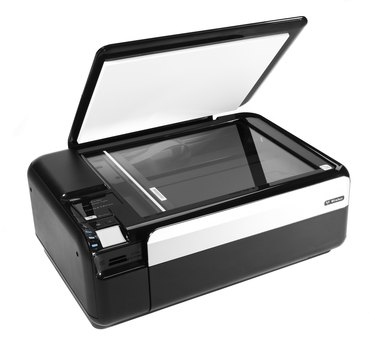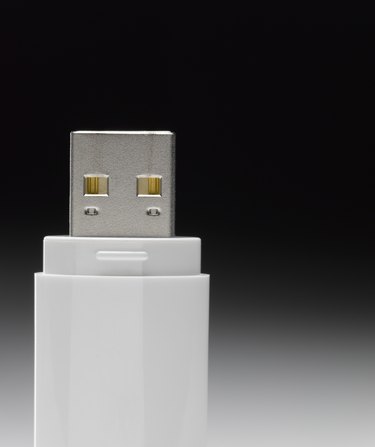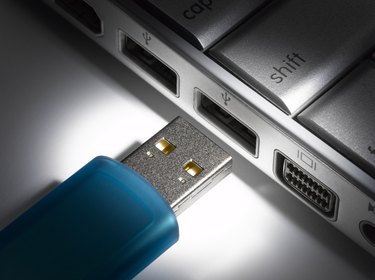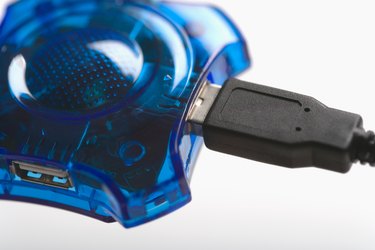
USB printers will work just fine regardless of which USB slot is used to connect the device to the computer. As far as the computer is concerned, every USB slot is a different connection point that does the same thing as the others. However, the printer may not work in a particular USB slot if it is faulty or has a conflict with another device on the computer.
USB
Video of the Day

USB is a widely-adopted peripheral device connection standard used by computers and other electronic devices. USB is backwards and forwards compatible, allowing transfer speed and power feed performance improvements with generational upgrades while maintaining compatibility between supported devices. For example, a USB 2.0 printer will work at USB 2.0 speeds with a USB 3.0 supporting computer, but will run at USB 1.0 speeds when connected to a USB 1.0 supporting computer.
Video of the Day
Slot Conflicts

While the USB standard can support more devices than the average computer can handle, a USB device may run into a conflict when using a specific slot. According to Computer Hope, the USB standard supports connecting up to 127 devices devices to a single computer. The port conflict is likely caused by insufficient bandwidth to the USB root hub. While the hub can support dozens of devices, it has limited data bandwidth. The hub will stop accepting new devices if the bandwidth is maxed out. Additionally, the printer could be assigned an incorrect port when connected to a computer with lots of connected peripheral devices. The bandwidth and port problems can be resolved by removing all unnecessary USB devices from the computer and rebooting the system.
Bad Slots

It's possible that a particular USB slot does not work anymore, which would create a situation where it matters which USB slot the printer connects to. USB slots, particularly slots connected to the motherboard or a peripheral card, may experience electronic failure and stop working completely. Additionally, front-loading and top-loading USB slots on a computer case may not work properly with the motherboard and fail when they're used with a peripheral device. Front-loading and top-loading slots may be fixable by updating the motherboard drivers through Windows Update.
Power Issues

Some USB devices run into issues when connected to USB hubs, daisy-chain USB devices, front-loading and top-loading USB slots because they may not carry the USB standard's full strength electric charge. While printers are unlikely to encounter a problem with insufficient electric power coming from a USB port because they use a dedicated power source, a printer that is powered entirely from USB power would be prone to the limited power issue.